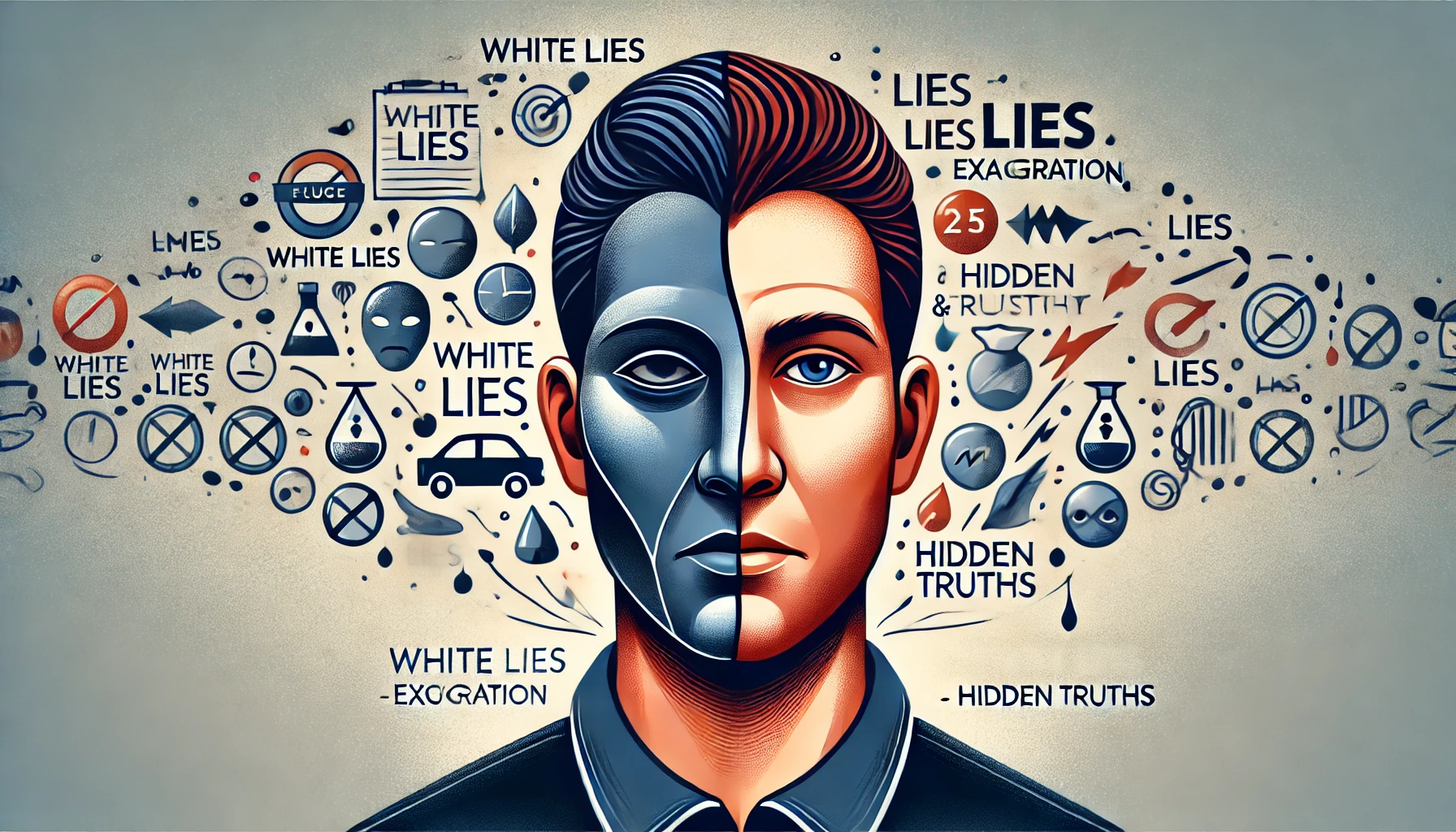Lying is a universal human behavior. From small white lies to major deceptions, people lie for various reasons—sometimes to protect themselves, sometimes to protect others, and occasionally just out of habit. But why do we lie? What happens in the brain when we deceive, and how does it impact trust in relationships and society?
Understanding the psychology behind lying can help us navigate social interactions more effectively, recognize deception, and build stronger, more honest connections. In this article, we explore the science behind why people lie, the different types of lies, and how trust plays a crucial role in human relationships.
1. The Psychology of Lying: Why Do We Lie?
Lying is not always malicious; in fact, it is often a survival mechanism or a social tool. Psychologists have identified several key reasons why people lie:
1.1. Self-Preservation
Many lies are told to protect oneself from harm, embarrassment, or negative consequences. This type of lying often starts in childhood, when children learn to avoid punishment by bending the truth. Examples include:
- Lying to avoid getting in trouble at work or school.
- Exaggerating skills or experience to secure a job.
- Denying responsibility for a mistake to escape blame.
1.2. Protecting Others
People also lie to protect someone else’s feelings or to avoid conflict. These lies are often considered “white lies” and can sometimes strengthen relationships. For example:
- Telling a friend their haircut looks great, even if you don’t think so.
- Hiding bad news to prevent unnecessary worry.
- Pretending to enjoy a meal to avoid offending the cook.
1.3. Social and Cultural Norms
Society often expects a certain level of dishonesty in social interactions. For instance:
- Politeness lies – Saying, “It was great seeing you,” even if the interaction was unpleasant.
- Diplomatic lies – Leaders or professionals may use carefully worded statements to maintain peace or manage public relations.
- Marketing and advertising – Businesses sometimes exaggerate product benefits to attract customers.
1.4. Personal Gain
Some lies are motivated by self-interest, whether financial, professional, or social. These include:
- Lying on a resume to get a job.
- Cheating in business deals to gain an advantage.
- Exaggerating social status to impress others.
1.5. Psychological or Pathological Lying
For some individuals, lying becomes a compulsive habit or is linked to psychological conditions.
- Pathological liars lie frequently, often without clear motivation.
- People with personality disorders (e.g., narcissistic or antisocial personalities) may use deception to manipulate others.
Lying is complex and deeply rooted in human psychology, making it both a survival skill and a potential source of harm.
2. The Science Behind Lying: How the Brain Works
Lying is a cognitive process that requires more mental effort than telling the truth. Neuroscientists have studied how deception affects the brain using brain imaging techniques like fMRI (functional magnetic resonance imaging).
2.1. Brain Regions Involved in Lying
Several key areas of the brain are activated when a person lies:
- Prefrontal Cortex – Responsible for decision-making and impulse control. It works harder when fabricating a lie because lying requires suppressing the truth.
- Anterior Cingulate Cortex – Helps regulate emotions and detect conflicts. This part of the brain is engaged when a person feels guilty about lying.
- Amygdala – Associated with emotions like fear and anxiety. When people lie, especially if they are nervous, the amygdala becomes more active.
2.2. The Habit of Lying and Brain Adaptation
Research suggests that the more people lie, the easier it becomes. A study published in Nature Neuroscience found that repeated dishonesty leads to reduced activity in the amygdala, meaning people become less emotionally responsive to lying over time. This explains why small lies can escalate into bigger ones—the brain adapts to deception, making it feel more natural.
3. Types of Lies: Understanding Different Forms of Deception
Not all lies are the same. Here are the main types of lies people tell:
3.1. White Lies
These are harmless lies told to avoid hurting someone’s feelings or to maintain social harmony. Example:
- “I love your new dress!” (even if you don’t).
3.2. Exaggerations
People often stretch the truth to make a story more interesting or to boost their own image. Example:
- “I’ve been to that restaurant a hundred times!” (when it was actually five).
3.3. Lies of Omission
Instead of outright lying, a person may leave out key details to mislead others. Example:
- A salesperson failing to mention extra fees in a contract.
3.4. Deceptive Excuses
These lies are used to avoid responsibility. Example:
- “Sorry, I can’t come—I’m sick,” (when the real reason is not wanting to attend).
3.5. Blatant Lies
These are completely false statements, often told with confidence. Example:
- “I never said that,” when there is clear evidence that the person did.
Understanding these types of lies can help us become more aware of deception in daily life.
4. The Impact of Lying on Trust and Relationships
Lying can damage relationships, careers, and even society as a whole.
4.1. The Cost of Dishonesty
- Loss of trust – Once someone is caught lying, it becomes difficult for others to believe them again.
- Emotional distress – Being lied to can lead to feelings of betrayal, anger, and insecurity.
- Legal and financial consequences – Fraud, perjury, and false claims can lead to serious penalties.
4.2. How Trust is Built and Broken
Trust is built over time through consistent honesty and transparency. However, a single serious lie can destroy trust instantly.
- Honest communication strengthens relationships.
- Repeated dishonesty makes rebuilding trust difficult.
To maintain strong relationships, people must balance honesty with sensitivity in their communication.
5. How to Spot a Lie and Encourage Honesty
5.1. Signs That Someone Might Be Lying
While not foolproof, certain behaviors can indicate deception:
- Inconsistent Stories – Details change when asked multiple times.
- Avoiding Eye Contact – Some liars struggle to maintain direct eye contact.
- Defensive Behavior – Overreacting when questioned.
- Excessive Justification – Giving too many details to sound convincing.
5.2. Encouraging Honesty
- Create a judgment-free space where people feel comfortable telling the truth.
- Lead by example by being honest in your own interactions.
- Use open-ended questions instead of accusatory ones to get genuine answers.
Encouraging honesty helps build deeper, more trusting relationships.
Conclusion
Lying is a natural but complex human behavior. While some lies serve a protective or social purpose, others can be harmful, damaging trust and relationships. Understanding the psychological and neurological reasons behind deception helps us navigate interactions more effectively, recognize dishonesty, and promote a culture of honesty.
By fostering open communication and encouraging truthfulness, we can strengthen relationships and create a more trustworthy society. After all, while the truth may sometimes be difficult to hear, it is the foundation of real connections and mutual respect.


